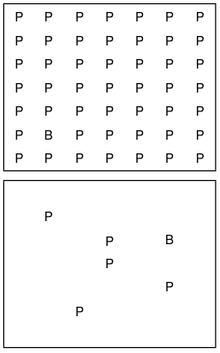Brain Scans and Artificial Intelligence: My Introduction to Social Neuroscience
Thursday, December 6, 2012
Puzzle Pieces
Wednesday, November 14, 2012
My Fair 'Lady'
| 'Lady' used to play games with me! |
My grandparents have always had dogs. I have many memories
of playing fetch using a tennis ball or running through the park with the dogs.
Apparently, my grandmother’s very old dog, Lady, used to follow me when I was a
toddler, play with me as I put together blocks, sleep beside my bed, and bark
at any stranger that came near me. My grandmother always says that we had some
deep connection, and she swore that Lady knew what I was thinking and tried to
protect me. Evidence is surfacing about animals exhibiting theory of mind in
very specific contexts, and one can indeed see some indication of this in dogs.
I, unfortunately, have never owned a pet. With multiple family members who are
terribly allergic to dog and cat fur, our household has never had animals
running through the corridors. However, even with Lady, I remember a sort of
understanding of my intentions and goals on her part. She barked when I walked near
a stranger. She played with me and
demonstrated joint attention during games. I’m not sure how much of my
experiences and understanding of our relationship is due to anthropomorphism or
due to her real capacity for theory of mind expectations. For this reason, I
would be interested to hear what evolutionary anthropologists and social
psychologists have to say on the subject.
Visual Search
 I have been a participant in many research studies before,
but this was the first time that I participated in one using a neuroscientific
approach.
I have been a participant in many research studies before,
but this was the first time that I participated in one using a neuroscientific
approach.
I participated in a two-part visual search study conducted by the
Stephen Mitroff lab. On the first day, I gave my experimenter a saliva sample
and answered a series of questionnaires asking about the last time I had drunk
caffeine or taken any medications. One can only assume that this was because
they were conducting some sort of study analyzing hormones. In addition, I answered
a multitude of questions evaluating my personality traits, preferences,
emotions and temperament, hobbies and interests, and judgments about society.
In the second portion of the study, I had to take an eye test which makes sense
given that I had to take part in visual searches. I performed a series of
visual search tasks involving colors, direction of lines, math, and letters.
The study involved four blocks each of four different tasks, and though it was
very long, I was given moments to rest my eyes. Though I am not sure what the
actual point of the study was, I had a lot of fun!
I have been interested in
visual perception since I took the “Perception in the Brain” course last
spring. As a research project for that class, I created my own visual search task akin to the one in the image above. Participants searched for a target letter 'T' amidst distracting 'L' shapes. However, there are many different kinds of visual searches examining the efficiency of our visual perception system. In this case, the experimenters seemed to be examining visual perception in conjunction with personality. I am eager to see what the results of this experiment will be!
Dehumanization
Dr. Susan Fiske came to speak at Duke about the treats of stereotyping and
its consequences for the evaluation of those around us. She presented her
stereotype content model, which describes how humans tend to categorize other
groups of people based on race, gender, age, and status in society. In
addition, social relationships, cooperation, competition, and power can
encourage or discourage forms of discrimination. By asking people to make
judgments about social groups using two dimensions, warmth and competence, she
was able to point out how society values them. For example, in the video clip below, Dr. Fiske and Ph D candidate Mike North
discuss the pity that people feel for older people, who are categorized as
having high warmth but low competence.
I was most intrigued by her thoughts on dehumanization of certain groups.
Those who are believed to have low warmth and low competence are evaluated with
disgust, like those who are homeless. She noted that fMRI studies have
indicated that the MPFC does not activate when we evaluate the homeless. She
suggested that almost as if by default, we do not humanize them and think about
their points of view. In other words, it seems as though we dehumanize people
with our stereotypes of disgust. Going beyond our categories and prejudices to
learn about the individual person requires motivation. If we are asked to think
about the mental states of members of those groups, then we are more likely to
individuate them and humanize them. I found it shocking that universally, our
default tendency to form quick judgments about groups of people can involve
dehumanizing others. However, it gives me hope that this can be overcome!
Thursday, November 8, 2012
Hume's Philosophy
Subscribe to:
Posts (Atom)